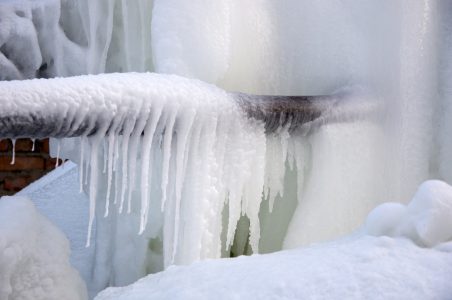Preventing Frozen Pipes in Winter: Professional Advice
Preventing Frozen Pipes in Winter: Professional Advice
Blog Article
Presented here further down you will find a lot of outstanding content regarding How to Prevent Your Pipes From Freezing.

Winter can wreak havoc on your plumbing, particularly by freezing pipes. Here's exactly how to prevent it from occurring and what to do if it does.
Intro
As temperatures drop, the danger of icy pipelines boosts, potentially leading to expensive repair services and water damage. Comprehending exactly how to avoid frozen pipes is critical for homeowners in chilly climates.
Understanding Frozen Pipes
What creates pipelines to freeze?
Pipelines ice up when revealed to temperatures listed below 32 ° F (0 ° C) for extended durations. As water inside the pipelines freezes, it increases, taxing the pipe wall surfaces and potentially triggering them to break.
Risks and damages
Frozen pipes can bring about supply of water disruptions, home damage, and pricey repair services. Ruptured pipelines can flood homes and create substantial architectural damages.
Indications of Frozen Pipeline
Recognizing icy pipelines early can stop them from rupturing.
Exactly how to recognize frozen pipelines
Look for decreased water circulation from faucets, unusual smells or sounds from pipes, and visible frost on exposed pipes.
Avoidance Tips
Shielding prone pipes
Wrap pipes in insulation sleeves or make use of warmth tape to safeguard them from freezing temperatures. Concentrate on pipes in unheated or outside locations of the home.
Heating techniques
Keep interior areas appropriately warmed, particularly locations with pipes. Open up cabinet doors to allow warm air to distribute around pipes under sinks.
Safeguarding Exterior Plumbing
Garden tubes and outside taps
Detach and drain pipes garden pipes prior to winter months. Set up frost-proof faucets or cover exterior faucets with protected caps.
What to Do If Your Pipes Freeze
Immediate actions to take
If you think icy pipes, maintain taps open to relieve stress as the ice thaws. Utilize a hairdryer or towels taken in hot water to thaw pipes gradually.
Long-Term Solutions
Architectural changes
Take into consideration rerouting pipes away from exterior walls or unheated locations. Include additional insulation to attic rooms, basements, and crawl spaces.
Updating insulation
Purchase top notch insulation for pipes, attic rooms, and wall surfaces. Proper insulation helps maintain consistent temperatures and minimizes the danger of icy pipelines.
Final thought
Protecting against icy pipelines needs positive measures and quick reactions. By understanding the reasons, indications, and preventive measures, homeowners can protect their plumbing throughout winter.
6 Proven Ways to Prevent Frozen Pipes and Protect Your Home
Disconnect and Drain Garden Hoses
Before winter arrives, start by disconnecting your garden hoses and draining any remaining water. Close the shut-off valves that supply outdoor hose bibs and leave the outdoor faucet open to allow any residual water to drain. For extra protection, consider using faucet covers throughout the colder months. It’s also important to drain water from any sprinkler supply lines following the manufacturer’s directions.
Insulate Exposed Pipes
Insulating your pipes is an effective way to prevent freezing. Pipe insulation is readily available at home improvement stores and is relatively inexpensive. Pay close attention to pipes in unheated areas such as the attic, basement, crawl spaces, or garage. Apply foam insulation generously to create a buffer against the cold. You can also wrap your pipes in heat tape or thermostat-controlled heat cables for added warmth.
Seal Air Leaks
Inspect your home for any cracks or openings that could let in cold air. Seal any holes around the piping in interior or exterior walls, as well as the sill plates where your home rests on its foundation. Additionally, make sure to keep your garage door closed unless you’re entering or exiting. Leaving it open creates a significant air leak that can lead to frozen pipes.
Allow Warm Air Circulation
During cold snaps, it’s essential to allow warm air to circulate evenly throughout your home. Leave interior doors ajar to promote better airflow. Open kitchen and bathroom cabinets to help distribute heat consistently around the rooms. If you have small children or pets, be sure to remove any household chemicals or potentially harmful cleaners from open cabinets for safety.
Let Faucets Drip
A small trickle of water can make a big difference in preventing ice formation inside your pipes. When temperatures drop significantly, start a drip of water from all faucets served by exposed pipes. This continuous flow helps prevent the water from freezing. Additionally, running a few faucets slightly can relieve pressure inside the pipes, reducing the chances of a rupture if the water inside does freeze.
https://choateshvac.com/6-proven-ways-to-prevent-frozen-pipes-and-protect-your-home/

I found that content about How to prepare your home plumbing for winter weather while doing a search on the search engines. Enjoyed reading our entry? Please quickly share it. Help someone else find it. Thanks so much for going through it.
Services Report this page